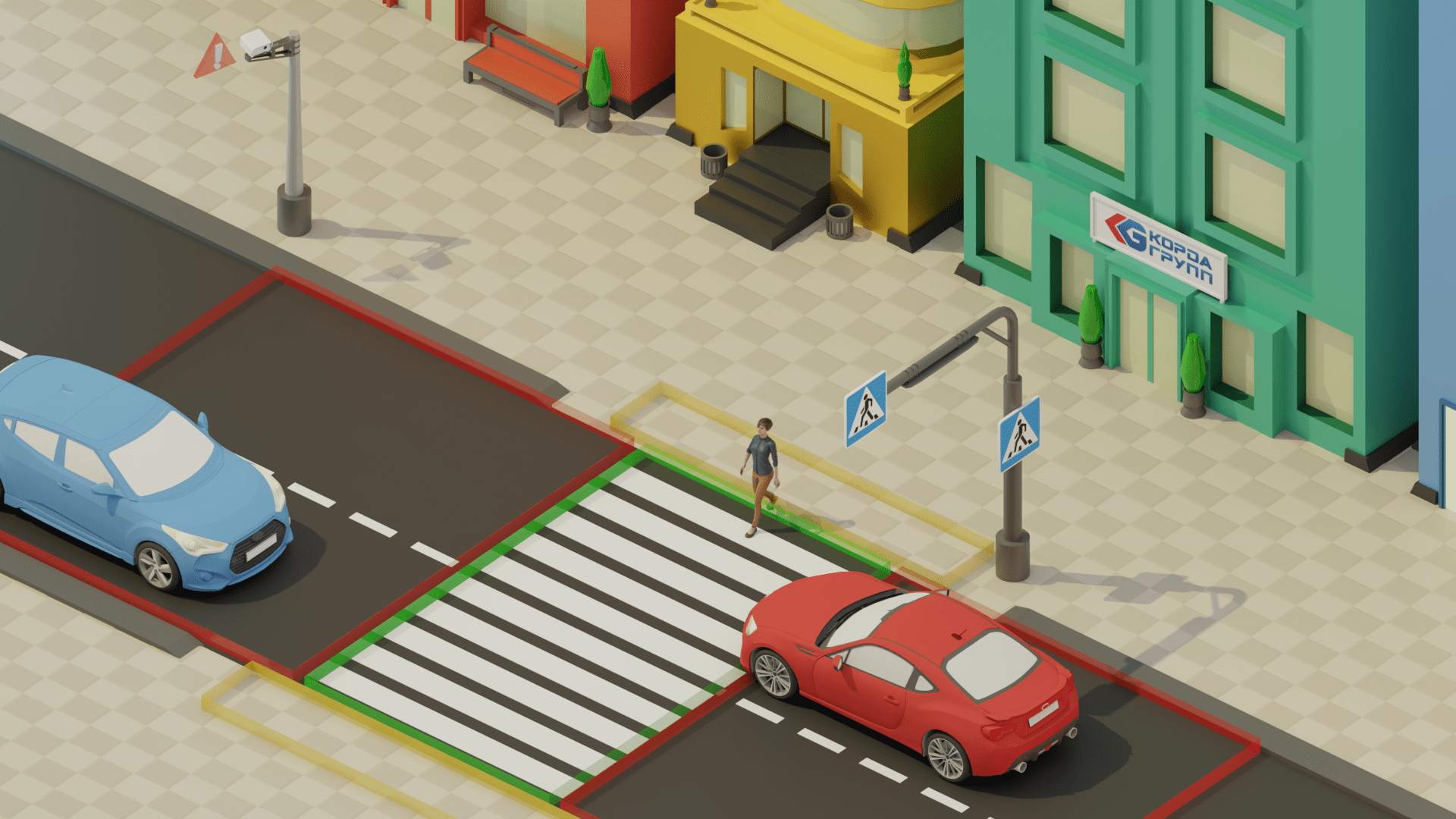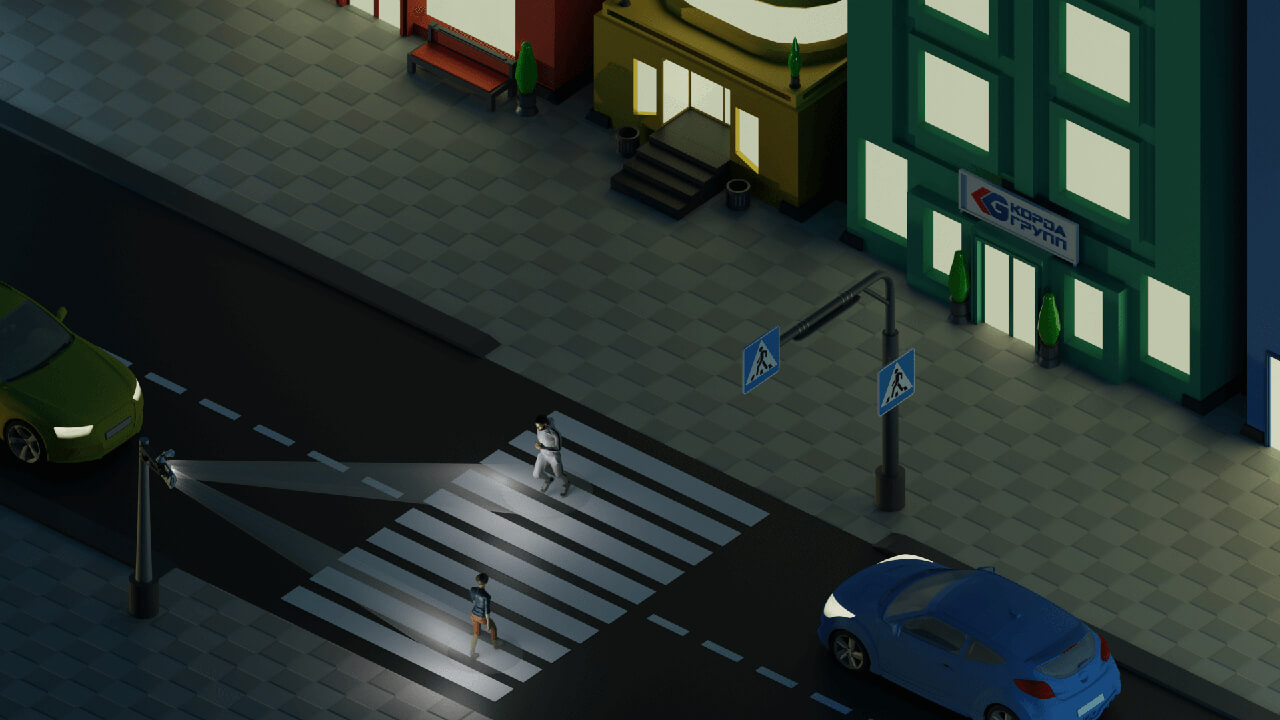Automatic Recording of Traffic Offences at Unregulated Pedestrian Crossings
According to the Russian National Traffic Safety Inspectorate, the number of traffic accidents at pedestrian crossings has been increasing continuously within recent years. This statistical data urges the Russian National Traffic Safety Inspectorate to increase traffic monitoring at pedestrian crossings and pressures the legislators into upgrading of penalties for drivers for traffic offences.
Smart video analysis allows the ATOM MS system to “see” pedestrians approaching thoroughfares and to track their movements throughout pedestrian crossings. At the same time, the system “sees” and tracks all vehicles approaching pedestrian crossings, identifies and records vehicle speeds and paths.
The system unerringly identifies and records both situations where drivers fail to let pedestrian paths and situations where pedestrians fail to comply with traffic rules (Traffic Rules, clause 4.5, parts 1 and 2 of Article 12.30 of the Russian Administrative Offence Code).
Given the existing Russian case law, the system software is configured to record offences only if drivers make pedestrians that have priority over drivers to change their movement paths or speeds, for the purposes of ruling out any ambiguous situations. In this connection, movement paths must intersect in time and space at the same time.
Using the distributed version of the system at unregulated pedestrian crossing jointly with the Orion Smart Lighting System (optional) allows to monitor pedestrian crossings of any widths or complexities.
Video Camera Positions and Monitoring Ranges
Video cameras are placed on supports installed at hard shoulders 15 to 50 meters from unregulated pedestrian crossings. Surveillance cameras perform video recording of general conditions 50 to 80 meters from pedestrian crossings.
Recognition video cameras record traffic conditions in:
- sidewalks;
- pedestrian crossings;
- thoroughfares directly before pedestrian crossings.
The entire space is divided into several areas as follows:
- «The starting area» – the initial pedestrian identification area;
- «The pedestrian monitoring area» – the pedestrian recognition area on the road;
- «The braking area » – the area where traffic conditions are analyzed for the purposes of making decisions on absence of offences on part of vehicles.

Simultaneously with automatic recording of traffic offences, the ATOM MS system:
- Takes photos of all passing motor vehicles;
- Monitors compliance with speed limits of specific road sectors (optionally);
- Records items and events (foreign items, fires, explosions, etc.) and notifies operators;
- Recognizes all visually readable license plates of vehicles crossing monitoring areas, logs them and checks them against connected databases;
- Identifies types, makes and models of vehicles;
- Records videos of unregulated pedestrian crossings (UPC);
- Collects traffic information (as a vehicle detector) for the purposes of analyzing the traffic.
Orion Smart Lighting System
For the purposes of increasing pedestrian safety at night time, UPC’s may have smart lighting systems with two operating modes being the Standby Mode and Support Mode.
In the standby mode, the entire thoroughfare surface accommodating the pedestrian crossing is illuminated.
In the support mode (when the pedestrian is using the pedestrian crossing to cross the thoroughfare), the system identifies the pedestrian position and ensures illumination regardless of the movement path.
The machine learning technology rules out false positives or omissions of the system.

